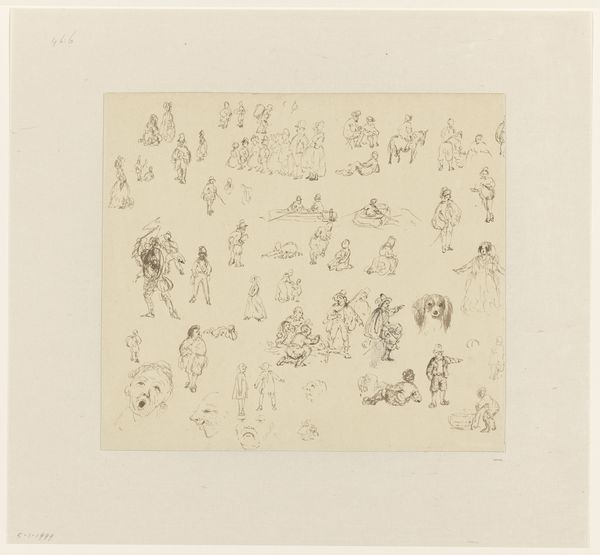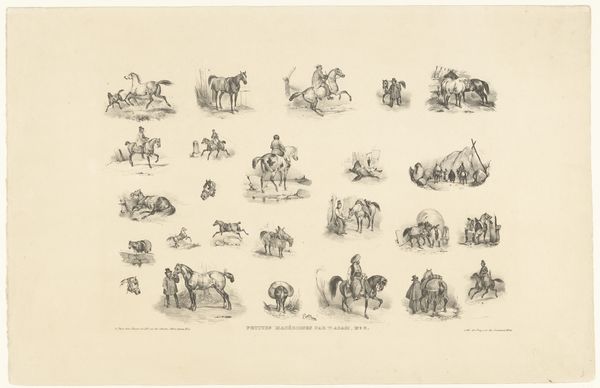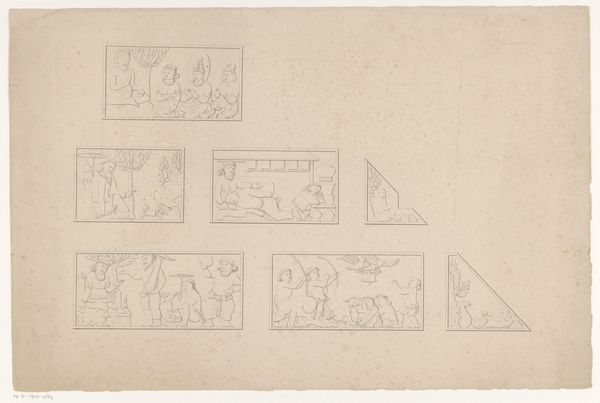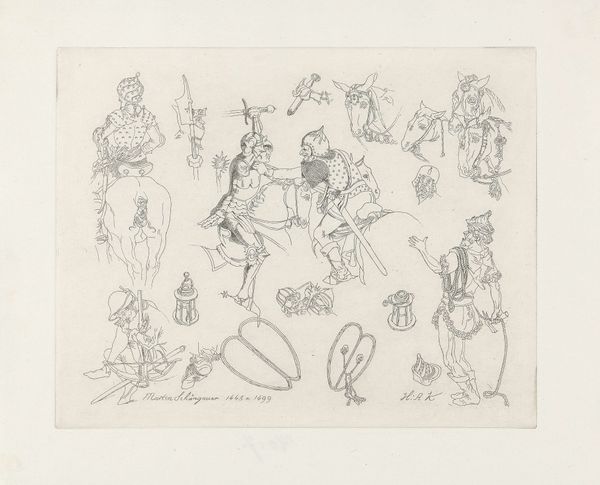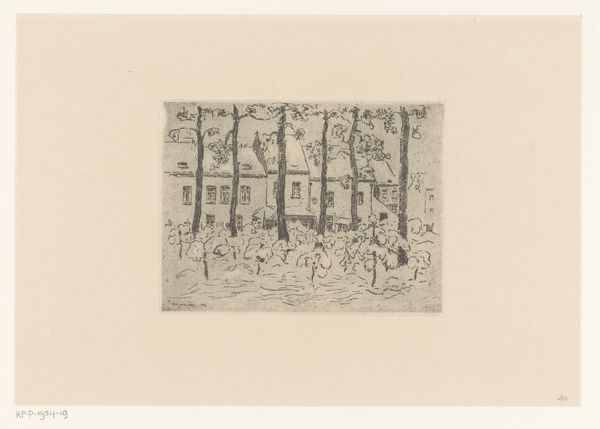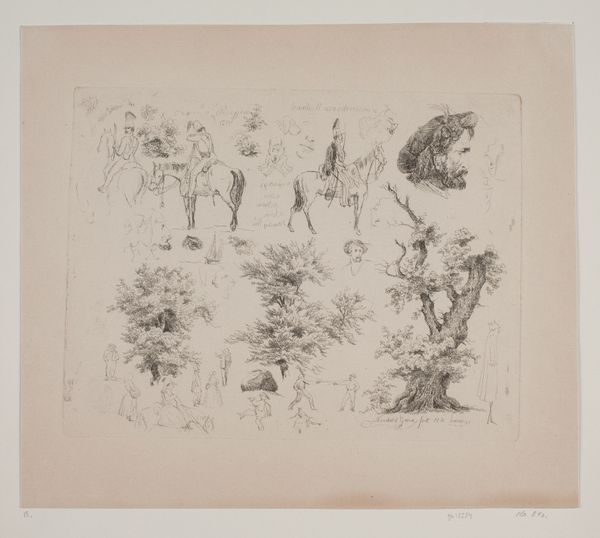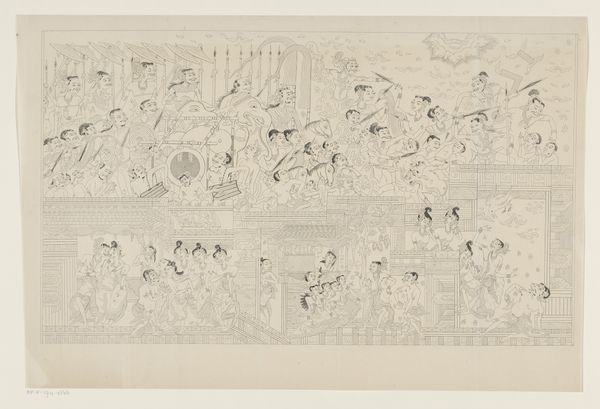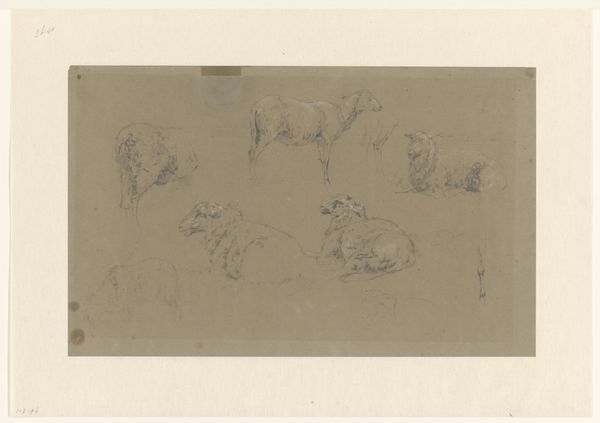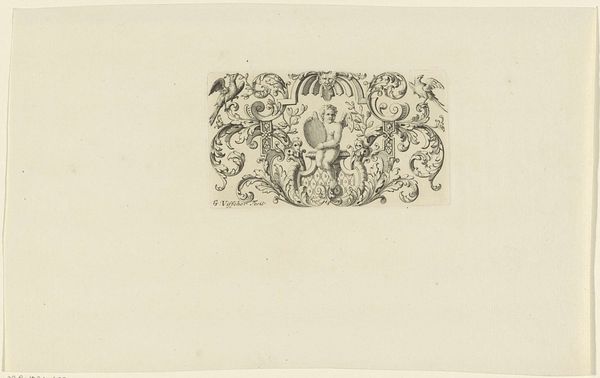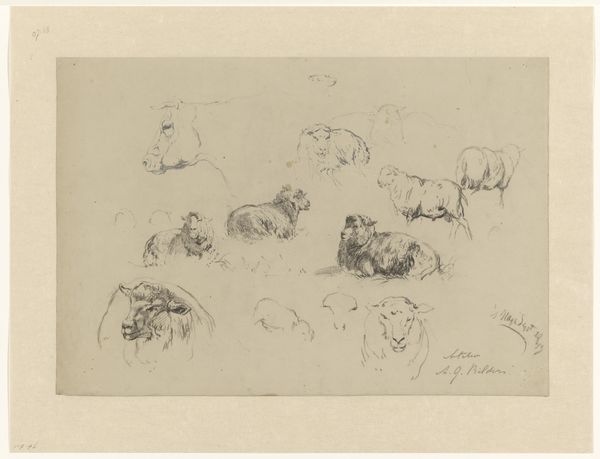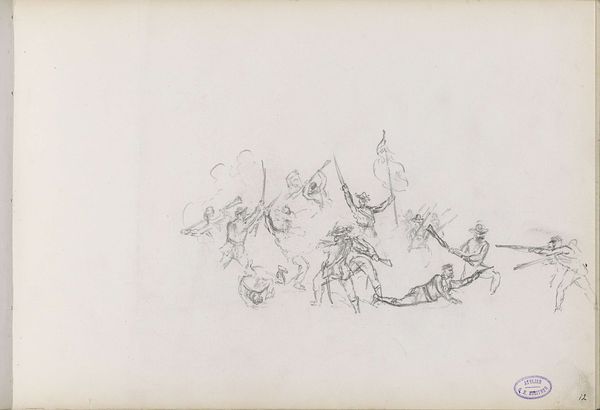
drawing, paper, ink, pencil
#
drawing
#
etching
#
figuration
#
paper
#
ink
#
pencil
#
genre-painting
Dimensions: height 255 mm, width 377 mm
Copyright: Rijks Museum: Open Domain
Editor: We’re looking at “Sketch Sheet with a large number of figures” by Jan van Ravenswaay, made between 1799 and 1869, using pencil, pen, and ink on paper. The sheet is filled with numerous small figures engaged in various activities. It almost feels like a snapshot of a bustling town square, capturing these fleeting moments. How do you interpret this compilation of sketches? Curator: The compositional arrangement presents a challenge to conventional readings of depth and narrative. The figures, though representational, lack a unifying perspectival system. Note how the artist dispenses with establishing a clear ground plane or horizon line; each figure exists almost independently. This fragmentation invites us to consider the drawing not as a unified scene, but as a study in form and gesture. Editor: So you're saying it's less about the story and more about how the artist explores form and movement? The figures certainly seem active. Curator: Precisely. Observe the dynamism in the line work; the varying line weights suggesting the movement and energy. Notice how the figures seem almost captured in mid-action. It prompts us to ponder the artistic process: Was this sheet for planning larger, formal paintings or autonomous as an exercise in capturing transient moments? Editor: It's like a visual record of the artist’s observations, where each figure is a self-contained study. It does highlight a fascinating focus on pure form and gestural line. Curator: Exactly. Consider then how van Ravenswaay employs the visual language of line and form to present these characters as distinct aesthetic experiences. Rather than narrative coherence, this piece excels in showcasing diverse form and captured energy through gestural expressions. Editor: That completely changes my perspective on this sketch. Now, I’m not so focused on finding a story, and instead appreciating the variety and skillful rendering of each individual figure. Curator: Indeed. By analyzing the drawing's formal elements—its line, composition, and arrangement—we gain insight into the artist's intentions and aesthetic sensibilities, and challenge our own expectations of pictorial representation.
Comments
No comments
Be the first to comment and join the conversation on the ultimate creative platform.
